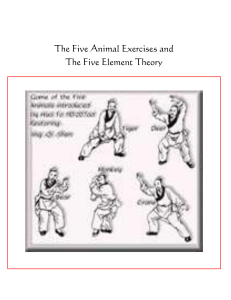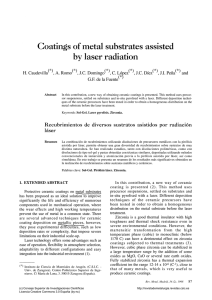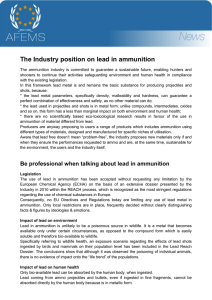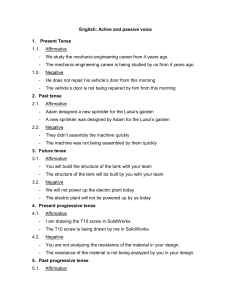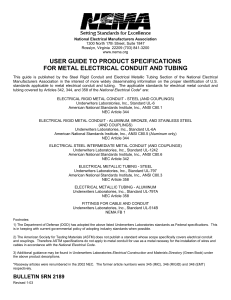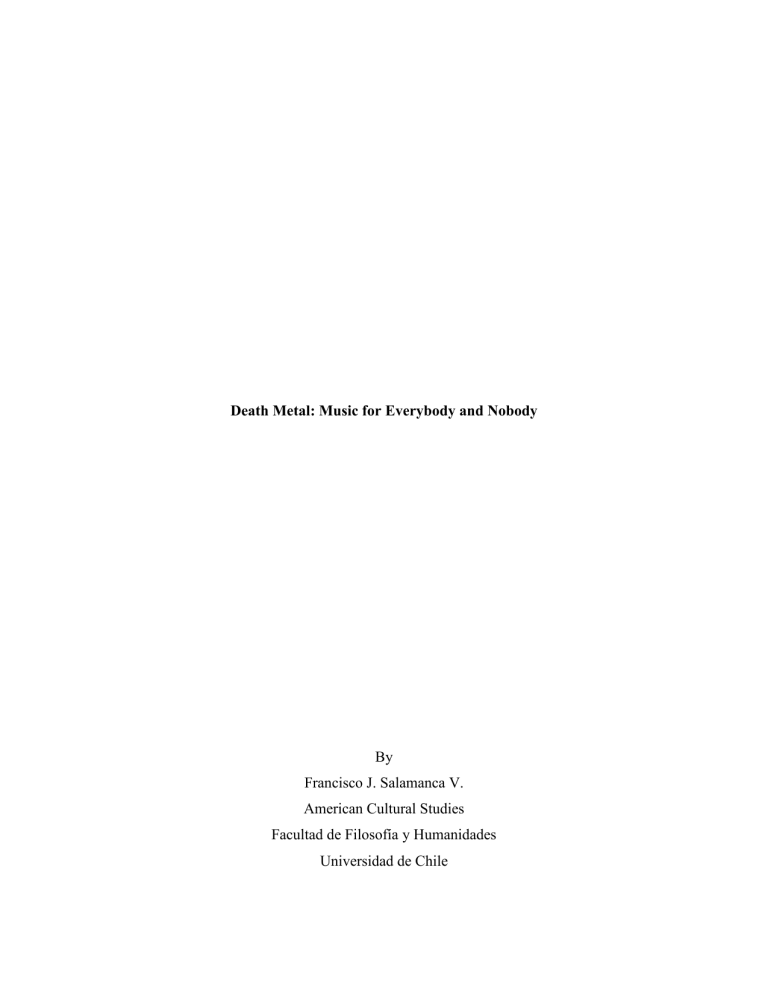
Death Metal: Music for Everybody and Nobody By Francisco J. Salamanca V. American Cultural Studies Facultad de Filosofía y Humanidades Universidad de Chile Salamanca 2 Introduction A young man of about 17 years old is dressed entirely in black; he wears a shirt with incomprehensible letters and monsters devouring corpses on it. He wears tight jeans and boots, and he is walking and listening to loud music on his earphones. Approaching along the street, a frightened mother holds the hand of her little son, but before they meet, she crosses to the other side of the street. The man is a metal head, and his favorite music genre is Death Metal. Many people label this music “evil” and “satanic” because of its shocking and defiant themes, which express feelings of isolation, marginalization, and a deep rejection of the mainstream (Music, Theology and Justice, 2017). What is Death Metal culture ultimately all about? Why has it been so appealing, not just to American youth, but to young people in Chile as well? By analyzing the gothic-like elements used by death metal musicians and producers, such as their album artwork, their singing style, and their lyrics, this article concludes that an important aspect of death metal head culture, which originated in the United States, is that it emerged as a reaction against, and as a rejection of, mainstream American culture, and it is defined in opposition to it. Many metal heads, therefore, have embraced aspects of a collective identity that is necessarily defined in opposition to mainstream culture, particularly those aspects of the culture linked to Christian ideology and imagery, which to death metal heads are extremely oppressive and hypocritical. Understandably, this has invited many scathing attacks by members of the Christian community and conservative elements of American society. But the metal head movement, and especially its ability to provide young and old with a sense of identity in opposition to the mainstream culture in the United States, also made it extremely appealing to young Chileans during the Pinochet dictatorship (1973-1990), which, as it happens, was also Salamanca 3 responsible for the establishment of a highly oppressive and hypocritical mainstream culture linked to Catholicism. The dominance of specific groups and perspectives in American society over time has obscured the fact that other groups, subordinate groups like death metal heads for instance, have not been considered as part of an American national identity (Neil Campbell, 2006, p. 15). This is related to hegemony. The concept of hegemony is used by Gramsci (2009) to refer to a process whereby a dominant class (in alliance with other classes or class fractions) does not merely rule a society by force or coercion, but leads it through the exercise of intellectual and moral leadership (Storey, 2003, p. 79). Narrowing the concept of hegemony to the music industry, we can name three main media corporations that dominate the market; Sony, Universal and Warner music (BBC, s.f.). Herman and Chomsky (1988) remind us that “they are actually run by people with opinions and a very specific set of interests”, the dominant class chooses what music is relevant and what will be internalized by the subordinate class and this is all death metal culture hate. Counter-hegemony, meanwhile, which was also developed by Gramsci (1995), is a process whereby people are able to develop and instrumentalize a discourse that is capable of challenging the dominant assumptions, beliefs and established patterns of behavior within a society. Both hegemony and counter-hegemony interactions help us to understand how death metal culture has used its lyrical and aesthetic content to provide youth with an identity and to reflect the power struggles young people have with current mainstream culture. Salamanca 4 Death Metal Origins. Death metal culture goes back to the early 1980's, while the term itself came from Thomas Fischer and Martin Ain, both of which are former members of iconic bands such as Hellhammer (1986-1990) and Celtic Frost (1980-1991) respectively, and who started a fanzine (fan magazine) entitled Death Metal. The music scene blossomed in big cities like New York, Los Angeles, Seattle, and London. However, the most important bands came from Tampa, Florida. Tampa City provided the perfect environment since it represented the intersection between greedy white men/rednecks, Caribbean voodoo magic and spooky Native American rituals (Fontaine, 2017). As a result, the most representative bands like Cannibal Corpse and Death and Morbid Angel were born there. Consequently, all of them had their own style, and they contributed to the genre by adding to it their unique personalities. Death metal music is usually fast, low, powerful, intense, and played very loudly—the guitars are often tuned down. A great deal of it consists of speedy and chaotic guitar riffs. Other bands play slow, deep, and repetitive tunes. Drums are overpowering, and there are very fast, hyper “double-bass” blast beats, which mimic the sound of machine gunfire (Death Metal Music, The Passion and Politics of a Subculture, 2003). Metal heads are very committed to supporting their bands. They use long hair, they also wear tight black jeans and black T-shirts stamped with covers from their favorite bands, mostly with demons, monsters and zombies, the whole suit that recall army soldiers. Among their main activities they exchange CDs, Cassettes, DVDs, they attend to concerts, they collect magazines with topics related to their bands’ Bios and Latest albums, and also they get together in pubs to hang out with friends at night or watch horror films. Salamanca 5 Gothic-like Elements in Death Metal Culture. I was really young when the band first started out. I was never really into writing Satanic lyrics at all, personally. We did write gore lyrics, but it was more like kind of tongue-in-cheek, horrormovie type level. Nothing like encouraging people to go out and hurt themselves or anything stupid like that. It's pure fantasy-movie type, scary stuff. And then, I just really got into writing about reality, which is what we all have to deal with. (Schuldiner, 1994). Going back in time in the 4th century A.D. the Goths, Visigoths, the Ostrogoths, and the Vandals were descendants of the Nordic Teutons of Cimbri. The Goths were important enemies of the Christian Romans who considered them as barbaric as well as pagans. Goths’ religion involved sacrifices in order to get some of their gods’ favor (Rogers, 2006, p. 88, 89). In addition, the Gothic style was extreme, seemingly uncontrolled, larger than life, intended to invoke a strong emotional response, whether awe, pity, compassion, horror or fear (Prendergast, s.f.). In general, people who are drawn to Goth love mythology, the mysterious, the supernatural, and they basically hold on to things in society that they feel are important and which are dying out (What is Goth?, s.f.). This does not mean Goths are evil; it just means that they have a different perspective when it comes to understanding themselves and their world. Many bands were inspired by the outstanding writer Edgar Allan Poe who was also inspired by the same principles centuries ago. He was very controversial because of his addictions, abuse of alcohol Salamanca 6 and his critics to other authors (Place, 2016, p. 5). With his short stories of mystery and horror such as “The Masque of the Red Death” as well as his gothic poem “the Raven” where he mixed the fears and the beauty exquisitely in levels never imagined before. Overall, this author unconsciously created some of the principles adopted by metal heads, representing a counterhegemonic force against mainstream and Christian ideology/imagery, In effect all of this help in order to understand how Death Metal ideology works. Death Metal bands have used various Gothic motifs and the first impression we get is through its artwork which is the invitation to get into this world of chaos, demons, blood, and noise. In 1991, the Death Metal band Malevolent Creation released their album The Ten Commandments whose cover art is attributed to the artist Pär Olofsson (Image 1). In the foreground, the biblical character Moses is portrayed as a demon, and two tablets are held high above his head and above what is presumably Mt. Sinai, which was the site from where Moses could show his followers the Promised Land. In this case, however, the tablets do not lead to the Promised Land; instead, they seem to wreak havoc and destruction down below. The album’s use of color is revealing. In general, there is an emphasis on one color over others: the reds are very red, but the other colors are washed out or have a lower contrast. Here we can appreciate how the artist explicitly plays with the fear of the demonic. The image inspires horror, insanity and evil, all of which are commonly part of Death Metal tropes. More importantly, this album cover art reveals how Death Metal culture understands Christianity and mainstream culture, and how the former has continuously bred the fear of the demonic in the collective subconscious of Americans. This influence goes back to the very first Puritan settlers, where the figure of Moses leading the Israelites to the Promised Land was taken to heart by the new colonizers in North America. The Salamanca 7 album cover alludes to the hypocrisy of Christianity in America by suggesting that instead of bringing salvation and virtue to the New World, the Ten Commandments instead brought oppression, dispossession, and, as such, are extremely hypocritical. Another important factor is the singing style used by Death metal lead singers, which also takes on a gothic-like aspect. While Christian singers have a lot of technical training and produce angel-like harmonious and pleasant sounds in harmony (which represent a kind of celestial heaven), death metal singers roar and scream as if they were demons crawling out from hell. They use a technique where the membranous folds above their vocal cords are used to exert pressure on their larynx to produce a deep and guttural growl, which is practically unheard of outside extreme metal music. In fact, they are not really described as singers at all since their voices exhibit little of the standard melody or tunefulness found in mainstream genres of music. Instead, death metal musicians use unpleasant vocal sounds in order to invite their listeners to explore a gothic aesthetic (and hence, an alternative perspective from which to experience the world). Therefore, the death metal singing style is deliberately unlike pop music, where the singing and the music are, for the most part, in harmony. A good example of the guttural growl used in death metal culture is the song Eaten Back to Life by Cannibal Corpse (1990). In this song, “cookie monster” vocals, made popular by one of the founders of the band, Chris Barnes, are characterized by lyrics that are almost incomprehensible without the aid of a lyric sheet. Indeed, some “cookie monster” vocalists produce sounds that are barely recognizable as a language at all (Death Metal and Music Criticism, 2012). The progressive elimination of recognizable signifiers of vocal melody and clarity is a key element of death metal. Death metal vocalists deliberately use this counter-cultural or oppositional approach to mainstream musical Salamanca 8 conventions in order to clearly demarcate their music from the Christian mainstream. For death metal heads, the link between popular music and Christianity is related to the harmonic and to the harmonious. And therefore, it is linked to control and oppression. Death metal music provides its listeners with a gothic alternative that frees them from this mainstream pattern. In terms of lyrics, death metal music also engages and articulates gothic-like elements that invite listeners to question and to, ultimately, subvert mainstream values. Death metal culture often articulates its subversion of mainstream ideology throughout their lyrics. Here they attempt to penetrate what they understand as the bubble created by Christianity, and they try to help listeners get out of that bubble and back onto the surface, where everything is clear—and where there are no more lies. This is another death metal “weapon” used to counterattack right into Christianity’s core. The band Vital Remains, for example, with their album Dechristianize (2003), goes straight to the point without metaphors or painkillers. The song Let the Killing Begin (appendix 1) sets the mood, and features a section of Carl Orff's "O Fortuna" which is a classic poem (that makes us reflect on life, as changing as the moon, turning like a wheel, sometimes benevolent and sometimes cruel) as well as voices from the movie The Greatest Story Ever Told. The track lyrics deal with the “dechristianization” of France during the French Revolution: in the 18th century. Trembling to its fall Putting an end to it all By storm, by force With might, without remorse We are here to conquer this world Salamanca 9 The title of the song already anticipated and let us very clear what kind of subject we would face in the lyrics; Satanism, religious criticism, apocalypse and blasphemous matters. Therefore in this first fragment, the artists are taking the place of the French revolutionaries as they set out to overthrow the old Christian order. He raped the culture of mankind He raped the pride of the ancient ways He raped all thought of freewill I who will watch you fall into obscurity In this second fragment, the artists illustrate what Christianity has done, how it has been eradicated older traditions and made people follow their dogmas instead. We know that with the insatiable desire for domination and expansion of the mainstream culture, many other small groups have disappeared or been absorbed by it. Even with their false constitutional free will, they have oppressed and subjugated people for being different in the name of their God. Hell's grim tyrant The eldest of night and chaos Breathe once again Far from the shadow of god This day of reckoning will be unavenged Glory of wrathful indignation I deny god and all religion Turn up the whites of their eyes Dechristianize In this last fragment, the song is calling upon Satan to rise again. Satan is an entity in the Abrahamic religions that seduces humans into sin or falsehood. In Christianity, he is usually seen as a fallen angel, who used to possess great piety and beauty but rebelled against God, and it Salamanca 10 is Satan who will challenge the shadow of God according to the world created by Christendom. These previews gothic elements are illustrated in the lyrics as shadows, chaos and hell, to express a counter-hegemonic reaction to the mainstream, as the artists say that Satan will take off the bandage that has blinded humankind, considering that for Christians God represents light, purity, and wisdom, in opposition Death Metal culture see him just as blinding and instrument for submission to conduct plunder and domination. Death Metal bands explore themes such as: the occult, death, violence, and mutilation, which are, for the most part, seen by the mainstream Christian culture as sins, heresy or blasphemy, and therefore requiring punishment, or at least scrutiny. Nevertheless, death metal culture revels in myths that explore humanity's darker side, and in the stories of human evil and degradation. There is an attempt to move beyond the binary structure of good vs. evil and to reveal the hypocrisy of the mainstream Christian society. Like it or not, these realms of human behavior predominantly took place, and continue to take place, within Christendom itself. Christians and members of the respectable elites, in general, have preached not to do what they, in fact, have done for centuries: feasting, drinking, having adulterous relationships with women, plunder, dispossession, etc. Death metal heads believe that mainstream society covers up its sins with the bible, they use it as their shield, and they use fear as their weapon. For this reason, metal heads enjoy taking advantage of this hypocrisy, making fun of their silly and obsolete way of thinking. Therefore, metal head culture shields itself from this hypocritical mainstream culture, and they have found a retreat into a powerful sound they call death metal. Through the use of gothic-like elements that Salamanca 11 help them create this movement (and this mood), they have constructed a new identity through the clothes they wear, the music they listen to, and the concerts they attend. They want to show society that they are just people who have different values and beliefs, but who still share a common ground. Chilean metal heads have done the same since the late 1980’s and early 1990’s; the growing popularity of American death metal seemed to fit perfectly with the Chilean situation: an oppressed youth during the dictatorship of Augusto Pinochet. Metal Heads in Chile, and Identity for Chileans in the Context of the Dictatorship. At the end of the 80’s on the Chilean streets appeared a wave of strangers with long hair, walking on the main avenues, the ladies and gentleman screamed out and quickly closed the doors and windows of thought, they have a bad appearance, they are bad people, they said, they were sweating violence, they were born into a world that they don’t like, and they showed it every moment… (Cine1, 2016). In Chile, death metal culture also had its repercussions in the late 1980’s and early 1990’s, but in a different and more complex context. Consequently, Chilean metal heads expressed their discontent against the political crisis the country was experiencing under the dictatorship, buying and listening to American death metal music served as a channel to express all their wrath and discontent towards the oppressive national context. In a way, death metal culture was appealing to Chilean youth because it provided local metal heads with an identity, a way to understand themselves as an oppressed group, and to take a stand against mainstream society, which was characterized by a dictatorship on the one hand, and Salamanca 12 by a conservative Catholicism on the other. Just as in the American context, local death metal heads articulated a counter-hegemonic position through their music and culture. This was not an easy thing to do in the Chile of the 1980’s, and there was an active effort to criminalize and demonize death metal culture. The national police during the dictatorship, for example, was extremely aggressive. They used to raid the concerts and gigs in order to stop them. This type of music was also rejected by the mainstream press, TV, and mass media in general. Many metal heads were branded as drug addicts because of the way they dressed and because of their long hair. Despite this oppression, the 1980’s were the best years for death metal music in Chile, and they contributed to a lively opposition movement, despite the fact that the latter also tended to look at them with suspicion The opposition to the dictatorship often described metal heads as “satanic”, as being gang members, and “drug addicts”. Perhaps, the country at that time was not ready for this kind of musical and social expression. But at the same time, this movement also contributed to the change that took place in Chile, as people realized that there was more to life than just the Catholic Church, the police and the military government. The impact of death metal culture on the hegemonic media establishment during the dictatorship was put to the test in an infamous incident on national television. One of the most popular TV programs in Chile at the time was called Sabados Gigantes. This program was part of a strategy to manipulate the masses and to establish a one-dimensional society (Marcuse 1964). Sabados Gigantes, a variety show, offered luxury products to members of the working class in exchange for their willingness to be ridiculed on television. The craving for consumption was palpable in each contest: It did not seem to matter if you sang badly, or if you Salamanca 13 were ugly and were ridiculed; what mattered was winning the stereo set, the color TV and, if you were lucky, a house or five thousand pesos. Programs like these were promoted by the mainstream during the dictatorship, diffused by the national media, and consumed by the oppressed as a form of coercive harmony (Nader, 1999). In 1987, on one of the episodes of Sabados Gigantes, a local death metal band called Necrosis, was invited in order to be mocked and dismissed, as a way to belittle the importance of youth expression., During this broadcast, Don Francisco (Mario Kreutzberger), the top host in the country, mocked the band live on national TV while they were trying to explain their music and death metal culture in general. Don Francisco constantly interrupted them and laughed at them, also involving the audience, who participated actively. All the metal heads in the country still consider that incident as the most offensive and humiliating thing they have ever experienced in the local death metal scene. The incident revealed the way the mainstream culture in Chile viewed, understood, and treated all cultural expressions that fell outside of the dominant, hegemonic cultural order. Despite this attack by the mainstream media, death metal music thrived in Chile during the dictatorship, and the fact that Sabados Gigantes felt it had to incorporate a death metal act into the show testifies to that. A vibrant culture focused around the infamous Rockshop, where fanzines, cassettes, and posters were sold and traded, building in this way an epicenter of cultural dissent. Furthermore, the Death Metal Holocaust festival became an iconic event and gathering in Chile that helped the dissemination of new bands and the movement in general, becoming one of the most important events in South America where bands such as Pentagram, Atomic Aggression and Dominus Xul all had a great influence, not just in Chile, but also abroad. Salamanca 14 By analyzing the gothic-like elements used by death metal musicians and producers, such as album artwork, singing style, and lyrics, this article explored how metal head culture, which originated in the United States, served as a way to articulate a counter-hegemonic movement within American society. When we look back at American history, we see the indiscriminate slaughter of innocent human beings, which was often justified by an obsession with the spread of Christendom, in the name of God. Despite this, we see that a non-violent music genre that seeks only to criticize and question American and Chilean society is discriminated against and vilified. Death metal heads are just trying to figure out what their place is in the world, and what they know for sure is that they do not belong to mainstream culture, because they do not share its values and beliefs and they do not feel represented by it. Salamanca 15 Works Cited BBC. (n.d.). BBC. Retrieved from BBC: http://www.bbc.co.uk/worldservice/specials/1042_globalmusic/page3.shtml Chomsky, N., & Herman, E. S. (1988). Manufacturing Consent: The Political Economy of the Mass Media. Vintage International. Cine1 (Director). (2016). Cassette, Historia de la musica Chilena [Motion Picture]. Fontaine, H. (2017, Noviembre 3). https://www.quora.com/Why-do-so-many-seminal-deathmetal-bands-come-from-Florida. Retrieved from https://www.quora.com/Why-do-somany-seminal-death-metal-bands-come-from-Florida: https://www.quora.com/Why-doso-many-seminal-death-metal-bands-come-from-Florida https://en.wikipedia.org/wiki/Satan. (2018, Septiembre 17). Retrieved from https://en.wikipedia.org/wiki/Satan: https://en.wikipedia.org/wiki/Satan Joseph Jacobs, L. B. (n.d.). Jewish Encyclopedia. Retrieved from Jewish Encyclopedia: http://www.jewishencyclopedia.com/articles/13219-satan Neil Campbell, A. K. (2006). American Cultural Studies, an instroduction to American culture. New York: Routledge. O’Connor, M. K. (2017). Music, Theology and Justice. New York: Lanham Boulder. Phillipov, M. (2012). Death Metal and Music Criticism. Maryland: Lexington Books. Place, R. (2016). Edgar Allam Poe Classic Tales. Zaragoza : EDELVIVES. Prendergast, K. (n.d.). Introduction to the Gothic Tradition. Retrieved from Introduction to the Gothic Tradition: https://www.usask.ca/english/frank/gothtrad.htm Purcell, N. (2003). Death Metal Music, The Passion and Politics of a Subculture. Jefferson, Noth Carolina: McFarland. Rogers, G. (2006). Understanding American Culture. Bedford, Texas: Mission and Ministry Resources. Schuldiner, C. ". (1994). 666 at Calling Death. Storey, J. (2003). Theory and Popular Culture. London: Pearson . What is Goth? (n.d.). Retrieved from What is Goth?: http://www.whatisgoth.com/ Salamanca 16 Annex Canal 13. (1987). Sabados Gigantes. Necrosis. [Archivo de video]. Recuperado de https://www.youtube.com/watch?v=OPgrXC1kLws Artwork The Ten Commandments, Malevolent Creation (1991), Image1. Roadrunner. https://www.nuclearblast.de/en/products/tontraeger/cd/cd/malevolent-creation-the-tencommandments.html-2 Salamanca 17 Song Eaten Back to Life, Cannibal Corpse (1990), track 1; Shredded Humans. Metal Blade Records. https://www.youtube.com/watch?v=i_r8eIweibI Lyric Dechristianize, Vital Remains (2003). Century Media Records. http://www.darklyrics.com/lyrics/vitalremains/dechristianize.html#1 Trembling to its fall Salamanca 18 Putting an end to it all By storm, by force With might... without remorse We are here to conquer this world Like cancer... our hate consumes the light of Elysium Unstoppable force of demonic supremacy All destroying...all devouring Heaven now ravaged... scarred and empty Strike the death knell of the pandemonium Imbrue one's hands in the blood of Christ Washing away all filth of righteousness The dimming of the light Engulfing the trinity He raped...the culture of mankind He raped...the pride of the ancient ways He raped...all thought of freewill I who will watch you fall into obscurity Washing away all filth of righteousness The dimming of the light Engulfing the fucking trinity I spit upon your deity Supposed creator of all things Salamanca 19 Idol of irreverence you worship above Show your true face... the image of prevarication Unhallowed be our twilight Thy grace untriumphant Mourn the crowning of unconquerable profanation Hell's grim tyrant...the eldest of night and chaos Breathe once again...far from the shadow of god This day of reckoning will be unavenged Glory of wrathful indignation I deny god and all religion Turn up the whites of their eyes... Dechristianize Our poisonous truths Divinity...drowning in impurity Unconquerable...unstoppable Sanguilent in your agony Like cancer... our hate consumes the light of elysium Unstoppable force of demonic supremacy All destroying...all devouring Heaven now ravaged... scarred and empty Strike the death knell of the pandemonium Imbrue one's hands in the blood of christ Washing away all filth of righteousness The dimming of the light Engulfing the trinity Salamanca 20 He raped...the culture of mankind He raped...the pride of the ancient ways He raped...all thought of freewill I who will watch you fall into obscurity Washing away all filth of righteousness The dimming of the light Engulfing the fucking trinity Dechristianize...Dechristianize...Dechristianize...Dechristianize... Hell's grim tyrant...the eldest of night and chaos Breathe once again...far from the shadow of god This day of reckoning will be unavenged Glory of wrathful indignation I deny god and all religion Turn up the whites of their eyes... Dechristianize... Dechristianize

